Paper Straw
The Function of Paper Straws
Paper straws have a significant role to play in a world that is debating how to lessen the amount of plastic garbage it generates. They offer a greener option to the throwaway plastic straw, which is used in Europe 25.3 billion times annually.
Paper straws are completely biodegradable, as opposed to plastic straws, which take hundreds of years to break down into hazardous microplastics. In other words, when paper straws are disposed of after usage, they naturally decompose and convert back into organic matter in the soil.
But do paper straws offer the same benefits to consumers as they do to the environment? Paper straws are the subject of numerous myths and misconceptions that claim that despite their eco-friendliness, they are neither fun nor useful for drinking. Even though some of these concerns may be valid for low-quality paper drinking straws, high-quality paper drinking straws do offer a pleasurable user experience.
Then how can paper straws function? Let’s investigate.
Paper Straw Tensile Strength
Paper straws are sometimes criticized for immediately becoming mushy after being inserted into a beverage. The straw is said to dissolve as soon as it comes in contact with the liquid, leaving the drinker with little fragments of paper floating around in their cup or glass. Naturally, in a way that a plastic straw would not, this then affects the individual’s ability to enjoy their beverage.
This criticism, however, does not hold true for paper straws made to a high grade. Paper straws of this caliber are meant to be sturdy; in fact, they can withstand contact with water for up to four hours. This implies that they maintain their firmness and shape for the duration of drinking a drink (and longer!).
Naturally, the paper straw will start to soften and disintegrate if it is submerged in liquid for more than four hours. But this shows how quickly the straw will decompose after use. Paper straws safely decompose back into the soil, unlike plastic straws, which are in danger of adding to the 8 million tons of plastic debris that are now entering our oceans.
Do Paper Straws Have a Taste?
Paper straws can also leave a bad taste in the user’s mouth, which is another drawback. While some claim the straw has a flavor similar to paper or cardboard, others claim the glue used to make it has a chemical taste.
According to the argument, a paper straw is a poor substitute for a plastic straw since it would adversely affect the flavor of your milkshake or cocktail.
A papery or bitter taste may be left behind by paper straws constructed from cheap paper and glue. Paper straws, on the other hand, are free from this issue because they are meticulously made using certified paper and adhesive that is made specifically for food and beverage packaging.
Additionally, by producing paper straws in a certified, tightly regulated setting, any chance of contamination that would compromise the straws’ flavor or safety is eliminated.
Do You Have the Ability to Shape Paper Straws?
People may believe that there is no other method to make paper straws because they are accustomed to seeing them as straight and rather wide in shape. In light of this, paper straws appear to be significantly less adaptable than plastic straws. Children may find it more challenging to drink with a straight straw, for instance.
In fact, paper straws can be produced in all the standard patterns used for disposable plastic straws. This features telescoping and U-shaped straws.
Do Paper Straws Actually Decompose?
Paper straws are sometimes criticized for not truly degrading due to the chemicals employed in their production. It’s possible that the glue holding the paper together will prolong the time it takes for the straw to break down.
Because of this, a premium paper straw will be made using an approved, eco-friendly adhesive. More importantly, though, an accurate and exact manufacturer guarantees that only the bare minimum of adhesive is used to give the paper straw the required strength. A used paper straw will biodegrade in a matter of weeks as a result.
Why Do We Still Need Drinking Straws?
Bans on single-use plastic straws are being considered by governments and businesses worldwide as a means of reducing plastic waste and safeguarding the environment. It is debatable whether biodegradable paper straws should take the place of disposable plastic straws, nevertheless.
Do we really need straws to drink through?
As a matter of fact, some people in our communities rely on straws to improve their quality of life and preserve their dignity. These persons include the elderly and those who find it challenging to drink directly from a cup or glass due to certain medical issues.
Also crucial is the availability of an eco-friendly straw substitute, as the popularity of takeout beverages is unlikely to decline very soon.
Paper Straws: The Final Word
How effective are paper straws? They offer a highly useful and pleasurable drinking experience when made to a high standard. Strong construction allows high-quality paper straws, like those produced, to withstand fluids for four hours without becoming mushy. Additionally, they don’t alter the flavor of the user’s beverage due to their neutral taste and odor.
Paper straws can be made with the appropriate technology in a range of different forms for various functions, including U-shaped and telescopic, as well as with a small diameter. Paper straws that are entirely biodegradable and environmentally friendly are made using the best materials and precise production.
Drinking straws are a convenient solution for drinking on-the-go and are crucial for sustaining quality of life for many people who require additional help to stay hydrated. High-quality paper straws are an excellent alternative to plastic straws that are only used once, reducing the problem of plastic pollution.
Are paper straws really so environmentally friendly?
What is it about paper straws that appeals to people who wish to contribute to environmental preservation so much? Why would someone who wants to save resources choose something that needs more processing and shipping than plastic or metal? The solution might not be as charitable as you might imagine.
Plastic straws are harmful to the environment, as we all know. They frequently end up in our oceans, endangering marine life, and can take up to 500 years to degrade in landfills. Therefore, it would follow that paper straws would be a far more environmentally friendly choice.
Paper straws are not more environmentally friendly than their plastic counterparts, in actuality. They might possibly be more harmful to the environment. This is due to the energy-intensive and greenhouse gas-emitting nature of the production of paper straws.
The degradation of forests caused by the manufacture of paper straws also reduces the number of trees that can absorb carbon dioxide from the atmosphere.
This article investigates if paper straws are truly as environmentally good as many believe them to be, or if they are merely a band-aid fix for a bigger issue.
Straws are switching from plastic to paper:
What Motivates It?
Two fads that are currently in vogue have combined to push for paper straws. The first trend, which has been developing for years, is an increased understanding of how single-use plastics, particularly straws, affect the environment. The emergence of the so-called ethical consumer, who is prepared to pay extra for goods that adhere to their ethical standards, is the second trend.
These developments have brought forth a backlash against single-use plastic straws. This backlash has led to plastic straw bans in several regions. Others have switched to paper straws as a result of it.
The Drawbacks of Paper Straws
A more eco-friendly choice, but not truly one.
Paper straws are superior to plastic ones since they biodegrade more quickly, as is common knowledge. At least that is what everyone is being taught. The issue is that, despite the fact that paper straws would eventually degrade, there is still a possibility that small animals could ingest these paper fragments.
Environmental issues are also raised in relation to the production of paper straws. Paper straw production uses a lot of energy and contributes to greenhouse gas emissions. The degradation of forests caused by the manufacture of paper straws also reduces the number of trees that can absorb carbon dioxide from the atmosphere.
Paper straws are still single-use waste items, just like plastic straws, and as their demand and overall production will rise over time, this is not good for the environment. With regard to environmental friendliness, it is easy to understand how all of these elements combined make paper straws a less-than-ideal alternative to plastic straws.
So, are paper straws really better for the environment than plastic ones?
There is no simple solution to this problem. Paper straws do, on the one hand, have a less drastic environmental effect than plastic ones. On the other side, making paper straws uses a lot of energy and clears trees, which is a negative environmental impact.
Your perspective will ultimately determine whether paper or plastic straws are more environmentally beneficial. Paper straws are a more environmentally friendly alternative to plastic straws if it is something that concerns you more. Paper straws are not as good as plastic straws if the environmental effects of manufacturing procedures are more important to you.
Are paper straws actually more environmentally friendly?
Paper straws are becoming more and more popular around the world as a more environmentally friendly substitute for plastic ones.
It is obvious that there is a problem with plastic straw usage that has to be resolved. Additionally, since many businesses prefer paper to plastic, it is important to determine whether paper straws are good for the environment or not.
But first, it’s critical to comprehend the bigger picture of why we use plastic straws as well as the consequences of their widespread use by consumers and businesses.
An overview of plastic straw history
On a steamy July day in 1888, Marvin Stone was sipping a mint julep when his natural rye grass straw started to fall apart and leave a gritty residue in the beverage. The first drinking straw patent was obtained by Stone, who created a paper straw in its place. By 1890, Stone Industrial was producing more straws than cigarette holders.
In order to replace the plastic used during the war, American manufacturers started mass-producing plastic goods for consumers after the war. Plastic straws were being manufactured by businesses at an increasing rate by the 1960s.
The globe produced 380 million tons of plastic as of 2015.
Ocean Pollution Caused by Plastic Production
The impact of plastic manufacture on the environment, particularly on the world’s oceans, has grown along with it. Using plastic straws significantly contributes to this effect. Plastic straws were created to be a one-time use item that we use to sip beverages before discarding them. Plastic straws, on the other hand, cannot be recycled and contribute significantly to the debris that ends up in our landfills or our oceans.
In “junk patches” that develop when trash and debris are forced together by circular ocean currents called gyres, a lot of single-use plastic accumulates. Microplastics, which cause the water to become murky and gelatinous, are the main component of these waste patches.
The Great Pacific Rubbish Area, also known as the Pacific Trash Vortex, is twice the size of Texas and is the biggest garbage patch. However, the majority of plastic trash assembles below the ocean’s floor, where deep-sea sediments act as a sink for the microplastics. Only approximately 1% of plastic debris gathers above the top in areas like the Pacific Trash Vortex. And, you got it, single-use plastics like plastic straws are the source of microplastics.
It can take up to 200 years for a single plastic straw to disintegrate. Because plastic straws are not biodegradable, they gradually break down into smaller and smaller pieces of plastic (known as microplastics), which fish and other marine animals mistake for food and consume.
Up to 71 percent of seabirds and up to 52 percent of turtles are thought to consume plastic to their stomachs.
Plastic is extremely destructive because, in addition to suffocating marine life, it breaks down and emits poisonous compounds like bisphenol-A (BPA). Polypropylene, a petroleum waste that is virtually the same material that fuels our cars, is the material used to make plastic straws. Therefore, as plastic straws breakdown, hazardous substances like BPA are released, which pollute our oceans.
Many sectors throughout the world have begun to outlaw plastic straws in favor of alternatives as a result of these harmful impacts.
Increased use of plastic straw bans
Single-use plastics like plastic bags and straws are becoming more and more restricted in many nations. Ireland began taxing plastic bags in 2002, and as a result, the use of plastic bags fell by 94%. 28 nations had restrictions on the use of plastic bags as of 2017.
However, only 3% of the total rubbish discovered on beaches is made up of straws and stirrers, according to Ocean Conservancy’s 2017 Coastal Cleanup Report. Straws, according to Bloomberg News’ estimation, probably only make up 0.03 percent of all plastic garbage on a global scale.
This is not to argue that making an effort to use fewer plastic straws is pointless. In order to significantly reduce the amount of plastic in the water, it’s a crucial first step to psychologically encouraging others to engage in similar actions.
Plastic vs. paper straws:
It is obvious that there is a problem with the use of plastic straws that has to be resolved. But are paper straws really more environmentally friendly?
There is little doubt that switching from single-use plastic straws to paper straws can have a positive environmental impact. The advantages of using paper straws over plastic straws are listed below.
Paper straws can be decomposed.
Even if you put your plastic straws in the recycling bin, it’s still likely that they’ll end up in a landfill or the ocean, where it may take decades for them to degrade.
Paper straws, on the other hand, are completely disposable and biodegradable. Within just three days, they will begin to degrade if they do wind up in the water.
Paper straws break down more quickly than plastic ones.
Plastic straws, as we discovered, can take hundreds of years to completely degrade and can last up to 200 years in a landfill. They are considerably more likely to end up in the ocean, where they degrade into tiny microplastics, which fish and other marine life then consume.
Paper straws, in contrast to plastic, will reintegrate into the environment in 2 to 6 weeks.
Using paper straws instead of plastic ones will cut down on their usage.
As a planet, we use an astonishing amount of plastic straws. Millions of straws are used daily, or 46,400 school buses’ worth annually. Paper will significantly lower this footprint compared to plastic.
They are (relatively) inexpensive.
The demand for paper straws has increased as more businesses become aware of the harmful impacts of plastic straws and environmentally concerned of their waste and recycling footprint. In actuality, paper straw suppliers are unable to meet the demand. Paper straws may now be purchased in quantity for as cheap as 2 cents per straw by businesses.
Animals are safer while using paper straws.
Paper straws are beneficial to marine life. Since they decompose after 6 months, they are less harmful to wildlife than plastic straws.
Alternatives to paper and plastic straws: 5 green options
For individuals who want to limit their paper and plastic waste, there are other choices available that are worth looking into. To replace paper and plastic straws, here are 5 options.
- Straws made of stainless steel
Stainless steel straws are the first option for people who want to limit their waste. Stainless steel straws are reusable, simple to clean, durable, and dishwasher safe, just like metal silverware. Pipe cleaners are typically included in many for simple cleaning.
They also don’t change the flavor of your beverage and have a decently appealing appearance.
- Bamboo utensils
Using straws made of all-natural bamboo from managed forests is a fantastic, portable alternative. After being used up, bamboo straws decompose within a few months. Additionally, they are ideal for tiki beverages.
- Plastic straws
They may be tacky, but they are an eco-friendly and biodegradable alternative to plastic straws. Before paper and plastic existed in the 1800s, people actually drank through straws made of straw. They still exist now as well.
- Glass straws
Glass straws are strong, reusable, and dishwasher-safe. There are numerous lengths, diameters, and colors available for these.
- No straws
Of course, doing away with straws altogether is the most environmentally friendly course of action. Avoid getting a straw with your drink if at all possible. Or, if you run a bar or restaurant, don’t give straws to guests until they specifically request one.
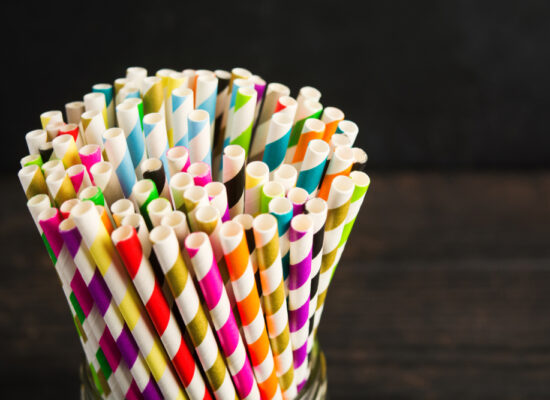
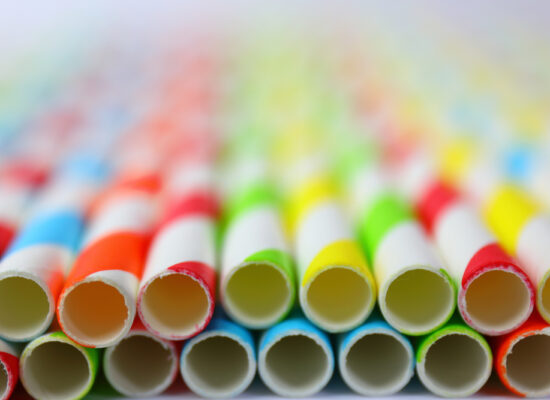
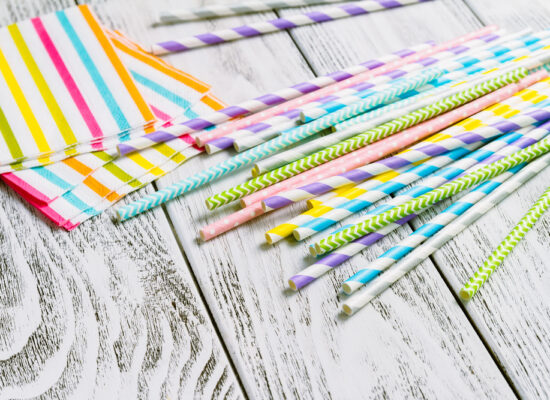
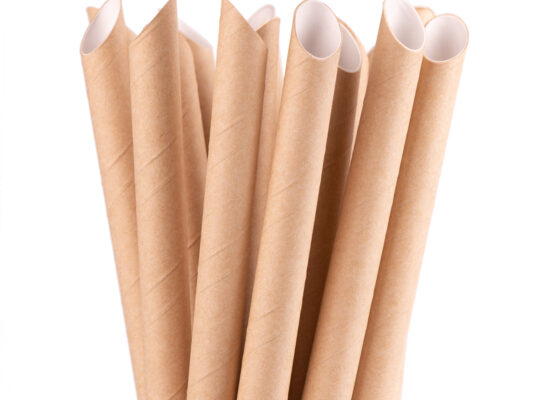
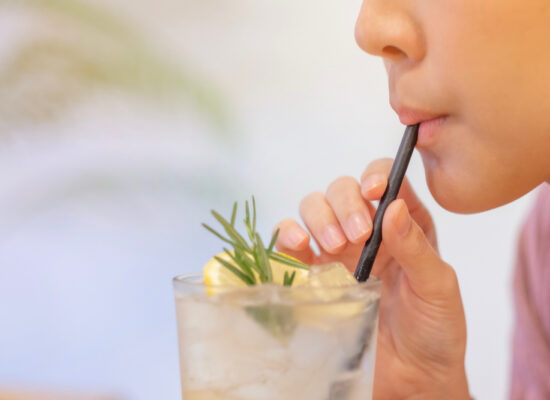
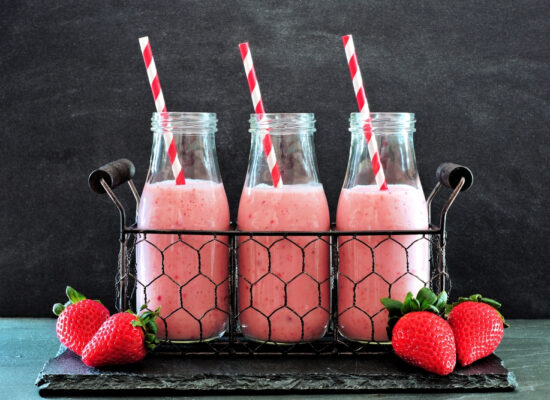
© Arbemu. All rights reserved